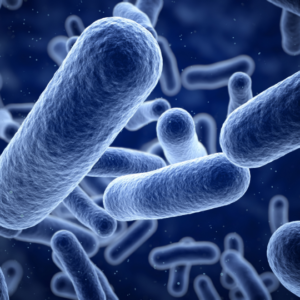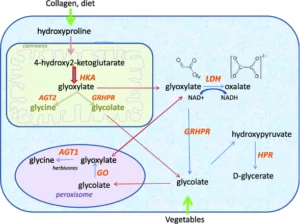Plant-based foods, beyond micro and macronutrients, contain significant concentrations of different bioactive plant compounds. Although most of those bioactive compounds are healthy for you, recently various research has questioned the healthfulness of plant-foods because of the presence of certain compounds, a.k.a. “Anti-nutrients”. Some examples of these anti-nutrients include lectins, oxalates, phytates, phytoestrogens, and tannins. Some of them are thought to restrict bioavailability of key nutrients, while others are also thought to be health promoters. In this article we are going to talk about Oxalates (Petroski & Minich, 2020).
Oxalates’ Genesis
Oxalate (or oxalic acid) is a substance that can form insoluble salts with minerals, like sodium, potassium, calcium, iron and magnesium. Oxalates are naturally occurring compounds that can be found in various plant-based foods, such as spinach, beet greens, beet root, rhubarb, cereal grains, nuts, sweet potatoes, etc. Animal-based foods, such as meat, dairy, and eggs, are generally low in oxalates. But they can also be produced as a byproduct of your own metabolism. Although oxalates are found in small amounts in a healthy diet, consuming too much of them can cause a number of health issues, including inflammation in the body (Petroski & Minich, 2020).
Oxalates have a mechanistic relationship with other compounds, such as glyoxylate, glycolate, and glycine. Oxalate is a product of Glyoxylate metabolism, while glycolate is produced when glyoxylate is metabolized. Glycine is an amino acid that plays a role in the detoxification of oxalates (Belostotsky et al., 2010).
But what exactly do Oxalates do in the body?
One of the key ways in which oxalates can contribute to inflammation in the body is through the activation of the NLRP-3 inflammasome. The NLRP-3 inflammasome is a complex of proteins that is activated in response to different stimuli, such as the presence of oxalates. When NLRP-3 is activated, it can trigger pro-inflammatory signaling pathways involved in the innate immune responses, releasing molecules like inflammatory cytokines (Sergi, 2022).
Oxalate metabolism is also influenced by the microbiome. The microbiome is the group of bacteria that live in the human body in a synergic manner. Some types of bacteria are able to break down oxalates and convert them into other compounds. For example, Oxalobacter formigenes, possess oxalate-degrading genes (Petroski & Minich, 2020). Recently, Bifidobacterium lactis was demonstrated to also decrease urinary oxalate by degrading dietary oxalate and reducing its intestinal absorption (Mehta et al., 2016). But not all bacteria are good. Other bacteria such as Bacillus spp., Alcaligenes sp., Actinomyces sp., etc) may actually produce oxalates as a byproduct of their metabolism (Sazanova et al., 2020) . The balance of the microbiome can therefore influence the body’s ability to metabolize oxalates and regulate inflammation.

Do my genetics affect my oxalate metabolism?
Surely it can. There are genetic predispositions that can affect oxalate metabolism. Several single nucleotide polymorphisms (SNPs), including GRHPR, SPP1, HOGA1, and AGCT, have been found to play a role in the control of oxalate metabolism. These SNPs may have an impact on how well the body eliminates oxalates and how it controls inflammation.
To address genetic predisposition that may affect oxalate metabolism, we recommend that you book a FREE appointment with us and learn more about our genetic and metabolic optimization approach. We can then analyze your genes and help you implement new habits in your lifestyle, nutrition and supplementation to reduce oxalates. As a general rule, by focusing on a diet low in oxalates (which can be achieved by reducing the intake of high-oxalate plant foods), you can decrease your oxalate exposure risk. Additionally, some mineral supplements, such as Calcium and Magnesium, may help control the metabolism of oxalate and lower inflammation.
Cooking for the win
Cooking can be a good strategy to reduce the content of oxalates in food. Due to oxalate’s solubility in water, wet processing methods such as boiling and steaming seem to be most efficient solutions to decrease oxalate content. Aside from cooking, pairing high-oxalate foods with calcium-rich foods may offset soluble oxalate absorption. A normal calcium diet (800–1,000 mg/day) should be able to offset potential inhibitory effects from dietary oxalates.

Conversely, we recommend to avoid roasting, grilling or baking high-oxalate foods. These cooking techniques may increase the concentration of oxalates in oxalate rich foods. (Petroski & Minich, 2020)
To wrap up…
It’s crucial to remember that while oxalates may play a role in the body’s inflammation, they are not the main cause. The management of stress, regular physical activity, and a balanced diet can help control inflammation and preserve general health.












